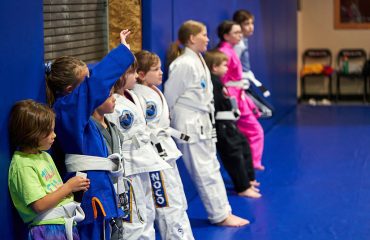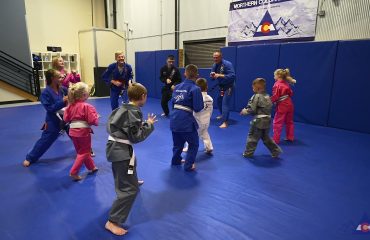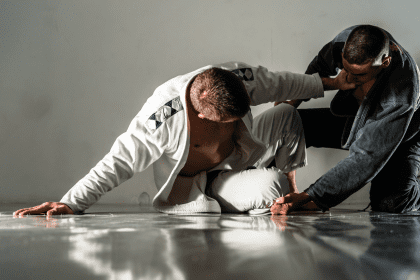
At NOCO Jiu Jitsu and Self Defense, we understand the profound impact that Brazilian Jiu Jitsu (BJJ) can have on your martial arts adventure. BJJ is not just about grappling and ground fighting; it’s a comprehensive system that enhances overall fitness, sharpens technique and builds mental resilience. Through a variety of movements and drills, BJJ offers unique benefits that transcend traditional martial arts training. The martial art of BJJ emphasizes the importance of leverage and technique over brute strength, making it accessible to practitioners of all sizes and ages. In this article, we’ll explore how incorporating BJJ movements can elevate your skills, improve your physical conditioning, and prepare you for real-life self-defense situations. Let’s dive into the world of BJJ and discover the power it holds for martial artists of all levels.
How Does BJJ Movement Improve Your Overall Fitness?
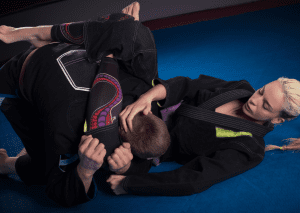
Brazilian Jiu Jitsu (BJJ) is renowned for its comprehensive approach to physical fitness. Engaging in BJJ movement helps improve strength, flexibility, and endurance. These benefits are crucial for martial arts practitioners, as they need to maintain peak physical condition to execute techniques effectively. By regularly practicing BJJ, we enhance our cardiovascular health, build muscle, and increase our overall stamina, making us more effective in both training and competition. The constant movement and drilling involved in BJJ training engage the entire body, from the neck and left and right shoulder down to the hips, left leg, and right leg, as well as left foot and right foot. This full-body workout not only improves physical fitness but also enhances body awareness and coordination, which are essential for any martial artist.
What Are the Fundamental BJJ Movements?
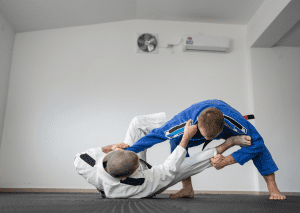
BJJ consists of various foundational movements essential for mastering the art. Some key movements include the technical standup, guard pass, and double leg takedown. These movements form the core of BJJ techniques and are practiced repeatedly to build muscle memory and precision even when used in the opposite direction. Understanding and mastering these fundamental movements is critical for anyone looking to excel in BJJ. The hip escape, also known as the shrimp, is another crucial movement that helps create space and improve positioning. Practitioners often start in a seated position and use their hips and legs to move their body away from an imaginary opponent, simulating a real grappling scenario.
How Can BJJ Solo Drills Boost Your Training?
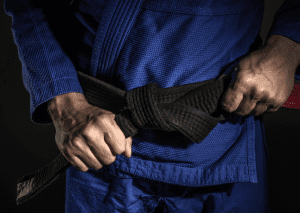
BJJ solo drills are exercises performed without a partner that focuses on refining specific movements and techniques. These drills are crucial for improving agility, coordination, and muscle memory. Solo drills allow practitioners to practice and perfect their movements without the need for a training partner, making them an excellent option for home training or when mat time is limited. By consistently performing following BJJ solo drills, practitioners can develop a stronger connection between their mind and body, leading to more fluid and effective techniques during live training.
What Are Some Effective Solo Drills?
Effective solo drills include shrimping, bridging, and technical standups. These drills mimic the movements used in live training and help build the necessary skills for sparring. The Granby roll is another valuable solo drill that improves flexibility and teaches practitioners how to invert their bodies, which is useful for guard retention and escapes. Practicing the sit-up escape from the guard position helps develop core strength and teaches how to create space when an opponent is on top. These drills can be performed on a mat or any soft surface, focusing on precise movement and control.
How Often Should You Practice Solo Drills?
Practicing solo drills daily can significantly enhance your BJJ skills. Regular practice ensures that movements become second nature, allowing for smoother transitions and better performance in live training sessions. Consistency is key when it comes to drilling, as it helps develop muscle memory and improves overall technique. Even short, focused sessions of 15-20 minutes can yield significant improvements over time. It’s important to vary the drills and focus on different aspects of your game to ensure well-rounded development in your jiu jitsu training.
Why Is Guard Passing Essential in BJJ?
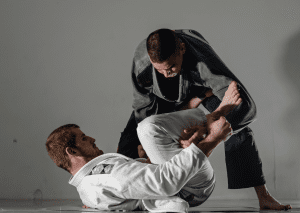
Guard passing is a fundamental skill in BJJ, allowing practitioners to move from a defensive to an offensive position. Mastering guard passing techniques is crucial for advancing position and securing dominant control over an opponent. Effective guard passing requires a combination of pressure, timing, and strategy, making it one of the most challenging aspects of BJJ to master. By developing a strong guard passing game, practitioners can significantly improve their overall BJJ performance and increase their chances of success in competition.
What Is the Best Way to Pass an Opponent’s Guard?
The best way to pass an opponent’s guard is through techniques like the knee-cut pass and the stack pass. These techniques require precision and timing to execute effectively. When attempting a guard pass, it’s essential to maintain good posture and pressure while being aware of potential submissions or sweeps from your opponent. Practicing various passing techniques and understanding how to chain them together can make your guard passing more dynamic and difficult to defend against. Remember that successful guard passing often involves a combination of technique, timing, and the ability to read your opponent’s reactions.
How Can You Improve Your Guard Passing Skills?
Improving guard passing skills involves repeatedly drilling specific techniques and applying them in live training. Watching tutorials and learning from experienced instructors can also provide valuable insights. Focusing on maintaining proper balance and pressure during guard passing attempts is crucial for success. It’s also beneficial to practice passing against different types of guards, such as the open guard, closed guard, and half guard, to develop a well-rounded passing game. Regular drilling and practice of guard passing techniques will help you become more comfortable and proficient in this essential aspect of BJJ.
How Do You Execute a Proper Technical Standup?
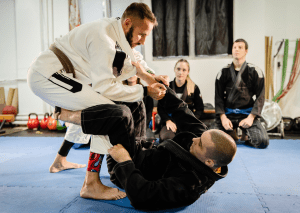
A proper technical standup is crucial for maintaining balance and control. To execute it, start in a seated position, place one hand on the mat, and use the one leg or opposite leg to create space and stand up while protecting yourself from an opponent. The technical standup is not only a fundamental BJJ movement but also a vital self-defense technique. It allows practitioners to safely return to a standing position while maintaining awareness of potential threats. Practicing the technical standup regularly improves your ability to transition smoothly between ground and standing positions, which is essential in both BJJ and self-defense scenarios.
What Role Does the Closed Guard Play in BJJ?
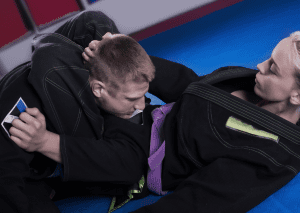
The closed guard is a defensive position where the practitioner wraps their legs around the opponent’s waist. This position allows for control and the setup of various submissions and sweeps. The closed guard is often considered one of the first positions that new BJJ practitioners learn, as it provides a strong foundation for understanding control and leverage. From the closed guard, you can work on developing your offensive techniques while maintaining a defensive posture. Mastering the closed guard is essential for building a solid BJJ game and can be a powerful tool in both competition and self-defense situations.
How Can You Master the Half Guard Position?
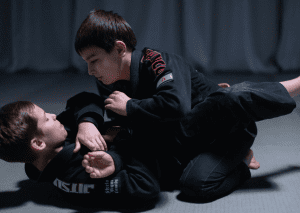
Mastering the half-guard involves understanding how to control the opponent’s movements and transition to more dominant positions. Techniques like the undertake and the lockdown are essential for an effective half-guard game. The half-guard is a versatile position that can be both defensive and offensive, depending on how it’s used. Developing a strong half-guard game requires practice in both attacking and defending from this position. By learning to use your legs, hips, and upper body effectively in the half guard, you can create opportunities for sweeps, submissions, and transitions to more dominant positions.
Why Is the Knee Cut Pass Important?
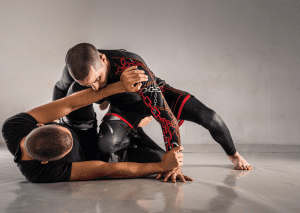
The knee-cut pass is a versatile technique used to pass the opponent’s guard and establish a dominant position. This pass is effective against various guard types and can be adapted to different situations. The knee-cut pass allows the passer to use their body weight and pressure to control the opponent’s hips and legs while creating an angle to pass. Mastering this pass can significantly improve your guard’s passing success rate and overall BJJ game. Regular drilling of the knee cut pass helps develop the necessary timing and feel for executing it effectively in live training and competition.
What Are the Key Steps in a Knee Cut Pass?
Key steps in a knee-cut pass include securing grips, positioning the knee across the opponent’s thigh, and driving through to complete the pass. Proper weight distribution and pressure are crucial for a successful knee cut pass. It’s important to maintain control of your opponent’s upper body while executing the pass to prevent them from regaining guard or countering. Practice the knee cut pass from various starting positions and against different guard variations to become more proficient with this technique. Remember that timing and sensitivity to your opponent’s reactions are essential for executing an effective knee-cut pass.
How Can You Use the Knee Cut Pass in Live Training?
Using the knee cut pass in live training requires timing and sensitivity to the opponent’s reactions. Practicing this pass in drills and applying it in sparring sessions can improve its effectiveness. When attempting the knee cut pass in live training, be prepared to chain it with other passes or transitions if your opponent defends successfully. Pay attention to your opponent’s hip movement and adjust your pressure and angle accordingly. Regular practice of the knee cut pass in various scenarios will help you develop the instinct for when and how to apply it effectively during rolling sessions.
How Can BJJ Improve Your Martial Arts Techniques?
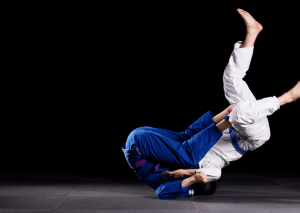
BJJ movements enhance techniques in other martial arts by improving balance, coordination, and body control. The skills learned in BJJ can be applied to striking arts, grappling, and self-defense scenarios, making it a versatile addition to any martial artist’s training regimen. The emphasis on leverage and technique in BJJ can help improve efficiency in other martial arts, allowing practitioners to use less energy while achieving better results. The ground fighting skills developed in BJJ are particularly valuable for self-defense situations, as many real-world confrontations end up on the ground. Incorporating BJJ into your martial arts training can provide a more well-rounded skill set and improve your overall effectiveness as a martial artist.
How Can You Develop a Strong Guard Recovery?
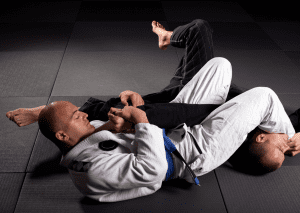
Developing a strong guard recovery involves practicing techniques that allow you to regain control when an opponent passes your guard. Drills like the Granby roll and hip escapes are crucial for this aspect of BJJ. Guard recovery requires quick thinking and efficient movement, often involving the use of frames and creating space to recompose your guard. Practicing guard recovery techniques regularly can improve your defensive skills and make it more challenging for opponents to maintain dominant positions. Remember that guard recovery is not just about regaining a specific guard position but also about constantly working to improve your position and create opportunities for sweeps or submissions.
What Are the Benefits of Live Training in BJJ?
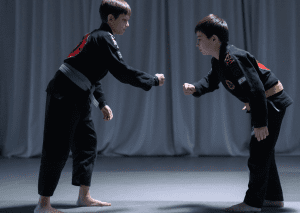
Live training or sparring is essential for applying techniques in real-time scenarios. It allows practitioners to test their skills against resisting opponents and develop the ability to adapt to different situations. Live training helps build endurance, improves timing, and develops the mental toughness necessary for competition and self-defense. Through regular sparring, BJJ practitioners learn to stay calm under pressure and make split-second decisions, skills that are invaluable both on and off the mat.
How Can Live Training Improve Your BJJ Skills?
Live training helps in understanding the practical applications of techniques, improving timing, and developing the ability to react under pressure. It provides opportunities to experiment with different strategies and learn from both successes and failures. Live training also helps develop sensitivity to your opponent’s movements and intentions, allowing you to anticipate and counter their actions more effectively. Regular sparring sessions can significantly accelerate your progress in BJJ by exposing you to a wide range of situations and forcing you to apply your techniques in dynamic, unpredictable environments.
What Should You Focus on During Live Training?
During live training, focus on maintaining proper technique, staying calm, and learning from each session. It’s also important to train with different partners to experience various styles and approaches. Pay attention to your body positioning, weight distribution, and breathing while rolling. Try to identify patterns in your own and your partner’s movements, and look for opportunities to apply the techniques you’ve been practicing. Remember that live training is not about winning or losing but about learning and improving your skills. Stay open to feedback from your training partners and instructors, and always prioritize safety and respect on the mat.
How Can BJJ Movements Aid in Self-Defense?

BJJ movements are highly effective for self-defense. Techniques like the triangle choke, guard recovery, and technical standup can be used to control or neutralize an aggressor in real-life situations. The emphasis on leverage and technique in BJJ allows smaller individuals to defend themselves against larger attackers effectively. BJJ’s ground fighting focus is particularly valuable in self-defense, as many real-world confrontations end up on the ground. Practicing BJJ movements regularly can improve your ability to maintain composure and make quick decisions in high-stress situations, which is crucial for effective self-defense.
What Is the Importance of the Technical Stand in BJJ?
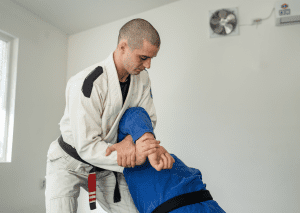
The technical stand is not only a fundamental BJJ movement but also a vital self-defense technique. It allows practitioners to safely return to a standing position while maintaining control and readiness to defend or counter. The technical stand teaches practitioners how to protect themselves while transitioning from the ground to a standing position, which is crucial in both grappling and self-defense scenarios. Regular practice of the technical stand improves balance, coordination, and situational awareness, all of which are essential skills for BJJ and self-defense.
How Can You Improve Your Triangle Choke Technique?
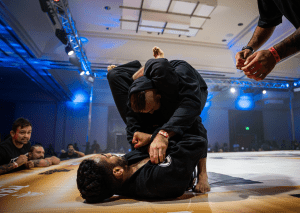
Improving the triangle choke involves practicing the setup, tightening the choke, and understanding the mechanics of cutting off the opponent’s blood flow. Focus on controlling your opponent’s posture and using your legs to create the proper angle for the choke. Practice transitioning into the triangle from various positions, such as guard and mount, to increase your opportunities for applying this submission. Regular drilling of the triangle choke, both with a partner and using solo exercises, can significantly improve your proficiency with this powerful technique.
How Can You Create Space in BJJ to Gain an Advantage?
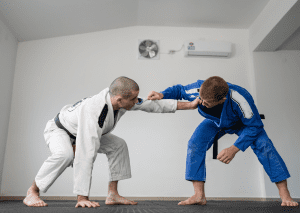
Creating space in BJJ is crucial for executing techniques and maintaining control. Techniques like shrimping, bridging, and using frames are essential for creating the necessary space to maneuver. Practice using your hips, legs, and arms to create and maintain space against various types of pressure. Developing sensitivity to your opponent’s weight distribution can help you identify opportunities to create space more effectively. Remember that creating space is not just about physical distance but also about creating opportunities for transitions, sweeps, and submissions.
How Many Moves Are in BJJ?
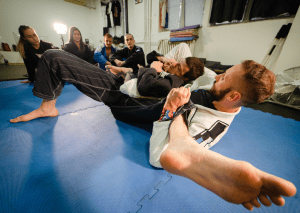
BJJ consists of hundreds of moves, with numerous variations for each. This vast repertoire includes submissions, sweeps, passes, and escapes, offering endless possibilities for practitioners to explore and master. The depth and complexity of BJJ techniques allow for continuous learning and improvement throughout a practitioner’s journey. While it’s important to have a solid foundation of basic techniques, advanced practitioners often develop their own unique variations and combinations of moves. The diversity of techniques in BJJ ensures that there’s always something new to learn and explore, keeping the art engaging and challenging for practitioners at all levels.
How to Remember Moves in BJJ?
Remembering moves in BJJ can be challenging due to the sheer volume of techniques. To improve recall, regularly drill techniques, visualize them, and use mnemonic devices. Keeping a training journal and reviewing videos from a YouTube channel can also help reinforce learning. Practice breaking down techniques into smaller, manageable steps and focus on understanding the principles behind each move rather than just memorizing sequences. Regularly reviewing and practicing techniques, both mentally and physically, can help solidify your understanding and improve your ability to apply them in live training situations.
Want to Master BJJ Movements? Join Us at NOCO Jiu Jitsu and Self Defense!
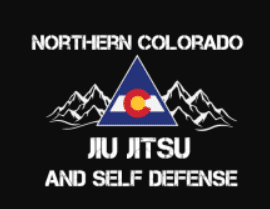
At NOCO Jiu Jitsu and Self Defense, we offer expert instruction and a supportive community to help you master BJJ movements and enhance your martial arts skills. Whether you’re a beginner or an experienced practitioner, our classes cater to all levels. Join us today and take your training to the next level! Visit our website for more information and to schedule your first class.
Incorporating BJJ movement into your martial arts training can significantly enhance your skills, fitness, and self-defense abilities. By understanding and mastering the fundamental techniques, practicing solo drills, and engaging in live training, we can become more proficient and confident martial artists. Explore the benefits of BJJ at NOCO Jiu Jitsu and Self Defense, and see how it can transform your approach to martial arts.
Frequently Asked Questions: How Can BJJ Movement Enhance Your Martial Arts Skills?
Q: What are some fundamental BJJ movements?
A: Some key fundamental BJJ movements include the technical standup, guard pass, and double leg takedown. The hip escape (also known as the shrimp) is another crucial movement that helps create space and improve positioning.
Q: How can BJJ solo drills boost your training?
A: BJJ solo drills improve agility, coordination, and muscle memory. They allow practitioners to practice and perfect movements without a partner, making them excellent for home training or when mat time is limited. Consistent practice of solo drills can lead to more fluid and effective techniques during live training.
Q: Why is guard passing essential in BJJ?
A: Guard passing is a fundamental skill in BJJ that allows practitioners to move from a defensive to an offensive position. It’s crucial for advancing position and securing dominant control over an opponent. Mastering guard passing techniques can significantly improve overall BJJ performance and increase chances of success in competition.
Q: How can live training improve your BJJ skills?
A: Live training helps in understanding the practical applications of techniques, improving timing, and developing the ability to react under pressure. It provides opportunities to experiment with different strategies and learn from both successes and failures. Regular sparring sessions can significantly accelerate progress in BJJ by exposing practitioners to a wide range of situations.
Q: How can BJJ movements aid in self-defense?
A: BJJ movements are highly effective for self-defense. Techniques like the triangle choke, guard recovery, and technical standup can be used to control or neutralize an aggressor in real-life situations. The emphasis on leverage and technique allows smaller individuals to defend themselves against larger attackers effectively. BJJ’s ground fighting focus is particularly valuable in self-defense, as many real-world confrontations end up on the ground.
